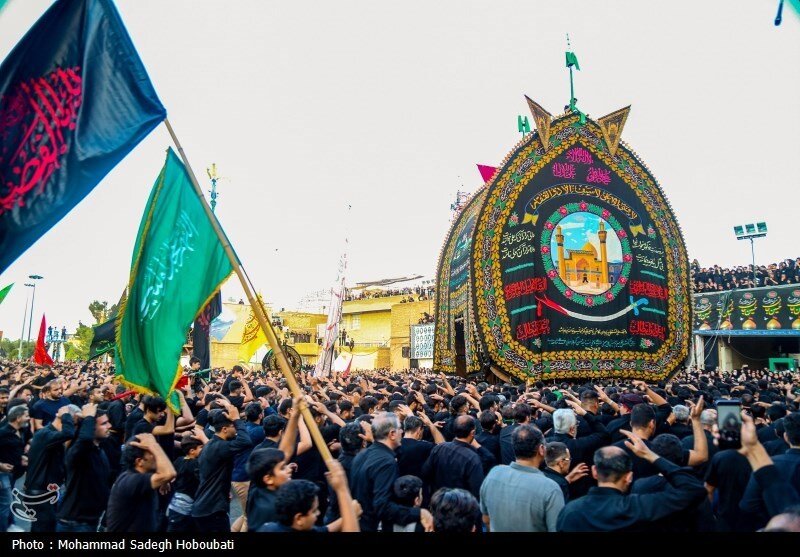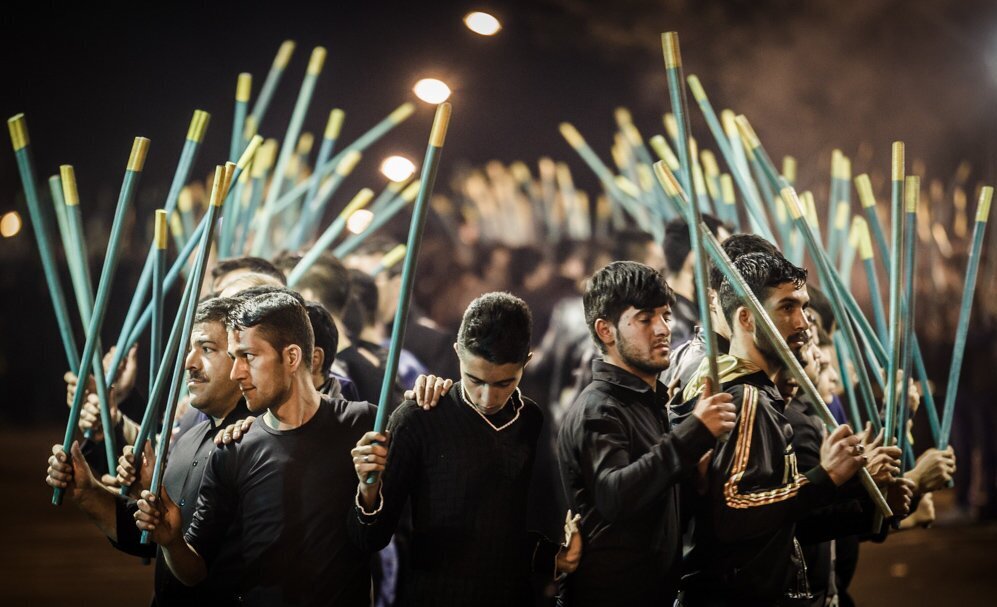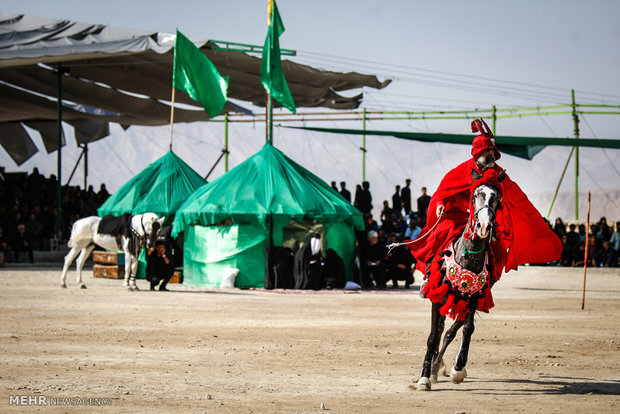Nationwide Muharram rituals blend faith with culture, devotion, and heritage

Iran, with its deep-rooted history and vibrant cultural landscape, becomes a living canvas of grief, remembrance, and unity during the month of Muharram -- the first month of the Islamic calendar.
For travelers interested in religious culture, intangible heritage, and dramatic expressions of collective memory, Muharram offers a rare opportunity to witness some of the most powerful and symbolic rituals performed across the ancient country.
Mourning ceremonies dedicated to the martyrdom of Imam Hussein (PBUH), the beloved grandson of Prophet Muhammad (PBUH), take on unique forms shaped by regional customs, local traditions, and heartfelt expressions of faith. These ceremonies reach their emotional peak during the ninth and tenth days of Muharram, known respectively as Tasu’a and Ashura, commemorating the Battle of Karbala in 680 CE.
Here are some of the most significant and visually arresting Muharram rituals to explore:
Mud-rubbing ceremony in Khorramabad
Perhaps one of the most visually intense mourning rituals takes place in Khorramabad, the capital of Lorestan province, where mourners partake in the symbolic act of "Gel Mali" -- mud rubbing.
This emotionally charged ceremony begins on the seventh day of Muharram and sees men donning clean white clothing after ritual grooming, only to cover themselves entirely with mud mixed in pools near the local Tekyehs (mourning halls). Some immerse themselves completely as an act of extreme devotion and sorrow. Fires are often lit in the cold seasons to warm the mourners as they chant, beat their chests, and form circles around the flames.
This ritual, symbolic of complete humility and mourning, extends beyond Khorramabad to other cities in Lorestan, and even parts of Kermanshah and Ilam provinces.
‘Shah Hussein’ chant of Tabriz

In the northwestern city of Tabriz, the “Shah Hussein” ritual is a deeply symbolic procession that begins days before Muharram and culminates on Ashura.
Dressed in black, mourners link together by placing their hands behind one another's backs, forming human chains that move rhythmically while chanting “Shah Hussein” and “Woe Hussein.” Each mourner also rhythmically moves a small wooden piece from the top of their head down to their feet, symbolizing the journey to Karbala in solidarity with Imam Hussein’s followers.
Accompanied in recent years by drums and cymbals, the ceremony still preserves its heartfelt soul through the resonant voices of the mourners—a sight both solemn and mesmerizing for any visitor.
Grand processions in Zanjan
Zanjan, in Iran’s central west, is often referred to as the “Capital of Husayni Passion” due to its large-scale and spiritually immersive Muharram events.
The focal points of mourning are the Husayniyya-e A’zam and Zainabiyya-e A’zam, where ceremonies commence from the beginning of Muharram but dramatically intensify on Tasu’a night.
The processions spill into the city’s streets, as thousands of mourners chant in Azarbaijani language, beat their chests, and form a moving sea of black-clad devotees. The blend of music, poetry, and collective emotion creates an unforgettable spiritual and cultural experience.
Nakhl-Bardari ritual in Yazd
In the desert city of Yazd, the Nakhl-Bardari (literary Palm-bearing), stands out for its symbolic richness and visual splendor.
The “palm” is a massive wooden structure adorned with mirrors, fabrics, and religious symbols. It is ceremonially carried through the streets on Tasu’a and Ashura, symbolizing the transportation of Imam Hussein’s body after martyrdom.
Yazd’s mourning also includes other unique traditions such as passion plays (Ta’ziyeh), rattle-playing, and water-carrier processions. The city’s historic Husayniyyas serve as dramatic backdrops for ceremonies filled with poetry, devotion, and ancient pageantry.
Passion plays in Tafresh

In Tafresh, a city known as the cradle of Iranian passion plays, the art of Ta’ziyeh -- a religious dramatic performance recounting the martyrdom of Imam Hussein -- is taken to its highest level.
These theatrical renditions, performed in local Takkiyas and Husayniyyas, captivate audiences with their poetic dialogues, rich symbolism, and powerful emotions.
Despite the story’s familiarity, the emotional intensity draws audiences year after year. The city’s long history with Ta’ziyeh has helped nurture skilled performers, turning each play into a living tradition and cultural landmark.
Mourning traditions in Abyaneh
In the picturesque village of Abyaneh, nestled in the central highlands, Muharram mourning rituals are imbued with timeless elegance. Residents, known for preserving their unique traditional clothing, carry out ceremonies in the same garments they’ve worn for generations.
The ceremony involves villagers walking through the town, visiting homes of the recently bereaved, offering condolences, and sharing in grief. Surrounded by mud-brick architecture and narrow ancient alleys, these ceremonies offer a poetic union of history, architecture, and spiritual reverence.
Mourning rituals united by devotion
Although the forms of expression vary --from mud-smeared bodies to stylized chants, from mirror-adorned palm structures to heartfelt lamentations -- the core spirit of Muharram in Iran is one of unity, sacrifice, and remembrance. Every region brings its distinct color and custom, yet all echo the same heartfelt devotion to Imam Hussein and his companions.
Whether in the alleyways of Yazd, the plains of Lorestan, the Takkiyas of Tafresh, or the historic streets of Tabriz, Muharram in Iran is not merely a series of ceremonies -- it is a national epic told in countless local dialects of devotion.
For cultural tourists, photographers, scholars, or spiritual seekers, traveling through Iran during Muharram offers an unparalleled opportunity to witness a living heritage that continues to inspire resilience, faith, and community.
AM
Leave a Comment